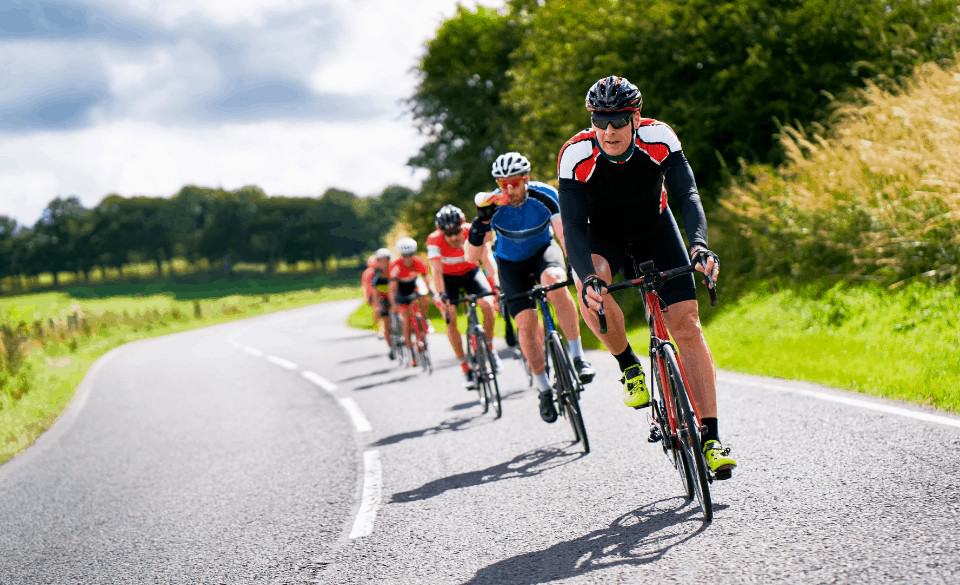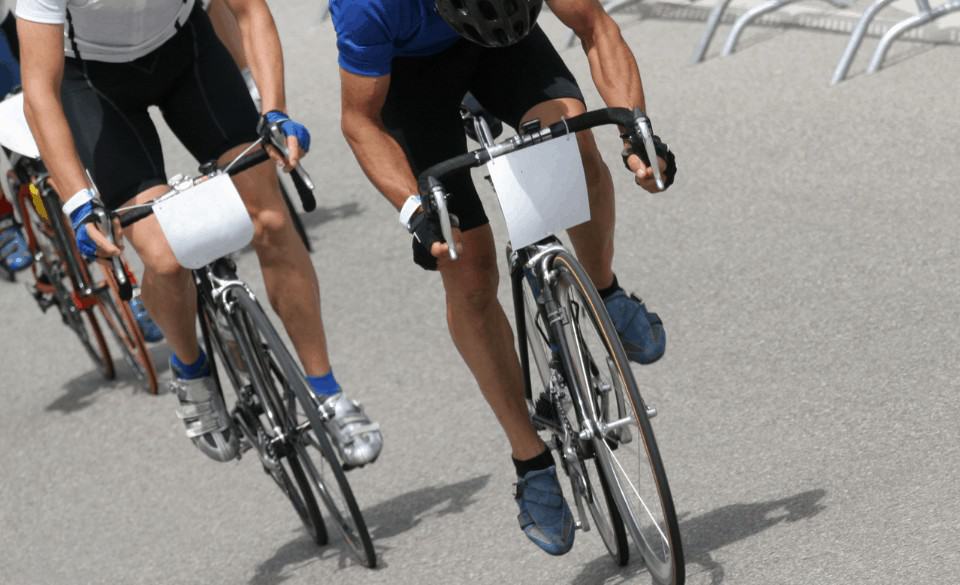
Paceline Riding – A Complete Guide To Cycling Drafting Advantage
Page Contents
Widely known in the cycling circle is that drafting can provide massive benefits, but often people get confused between the words drafting and paceline riding. This type of riding can help both small and larger groups of cyclists control the speed and intensity with minimal effort.
Paceline Riding – A Complete Guide
Paceline riding is either done in a single or double line. In a single group, riders are in a single file lined up behind the first rider. This first rider is the rider that controls and maintains a constant speed.
Single Paceline riding
The leading rider of the paceline once done his turn on the front of the group then rotates or pulls off to the side and slowly drifts towards the back of the group. Then rider behind him before rotation then takes control of the single file and sets the pace.
The pace of the next rider tries to keep the same intensity or speed. The time then spent at the front can be anything from 10-20 seconds up to several minutes.
A Single group requires less road space and is often seen in long breakaways and time trial events.
Double paceline riding
A double paceline or double echelon contains two single file groups side by side. This type of paceline is continuously in motion. This means that instead of the rider pulling off the front and moving to the back of the single file they would pull over to the adjacent group. This group is going slightly slower thus allowing the rider overtime to make their way to the back. From there (the final position is reached at the back of the line) they would then move over to the first group (or faster group).
The double paceline is often seen in faster group rides with less traffic congestion and in racing during large breakaways.

How To Ride In A Paceline?
Learning how to ride in a paceline can be difficult. If your a beginner surround yourself with cyclists with the experience that are able to constantly control an even speed.
To start, focus on learning to ride in a single line first, it is a good idea to add one day a week into your cycling training plan. Start by leading the single file for 20-30 seconds, then once your time is up pull off to the left or right (depending on the wind) and decrease your speed by 2-3 km/hr.
Try to stay close to the single file while you drift back. Staying closer to the line will help you still get benefit from the drafting. As you find yourself close to the last rider, then move either to the left or right so you are directly behind the last rider of the single file.
When dropping back it is important not to drop your speed too much. Doing so will mean a large acceleration to catch onto the wheel of the last rider. While this may not sound like much, after 10-20 efforts like this you may find yourself having nothing left in the legs to continue with the group.
Now the double paceline is a little more complicated although a similar principle. Start by forming two lines adjacent to each other. one line should be slightly faster than the second line. As with the single paceline once you have done you turn, pull over to the left or right (depending on the wind). Then drop your speed slightly and within some seconds the following rider would have pulled over as well, thus being in front of you. As more people move in front of you in you will find yourself moving closer to the back. Once you are at the back you must make the same transition to the faster group.
Once you have become more experienced riding in both these situations wind will then play a large part in which direction the rotation occurs. This helps the advancing line somewhat protection from the wind.
Cycling Drafting Techniques
Learning to be able to draft behind another rider by following their wheel closely is a big difference between a beginner and an experienced rider. An experienced cyclist knows where to locate their front wheel behind the opposing rider in all conditions.
Cycling drafting is not only about learning to sit behind another rider, but also about learning where to position their wheel. If the wind is coming from the left side of the road, you would then move from being directly behind the rider to being on their right side. this can be anywhere from half a wheel or more depending on the strength of the wind. The more wind there is coming from the left, the more you would position yourself forward to the right of the rider.
If the wind is coming from the right you would just position yourself to the left of the rider.
If the wind is coming from the side but not as strong, the experienced cyclist would position themselves behind the rider just offset to adjust for the angle of the wind.
knowing where to position yourself based on the wind takes months of practice. But if you have access to a power meter this will help you learn how much this affects your power relative to how much protection from the wind you are receiving. So practice moving around the riders back wheel to see where you produce the least power, this will help you understand the benefits of cycling drafting techniques.
Cycling Drafting Advantage
One of the biggest advantages of cycling is that in a group you are able to go much faster (and with less effort) than riding individually.
Cycling drafting advantage occurs when a cyclist is located behind another. This provides lower air pressure and protection from the wind, thus reducing wind resistance, energy and power needed to pedal.
Over the course of riding or a cycling event, every rider can experience these drafting benefits. Drafting or riding an echelon can save you between 20 and 40 percent of your energy expenditure. But remember this depends on how close you are and how strong the wind is.



